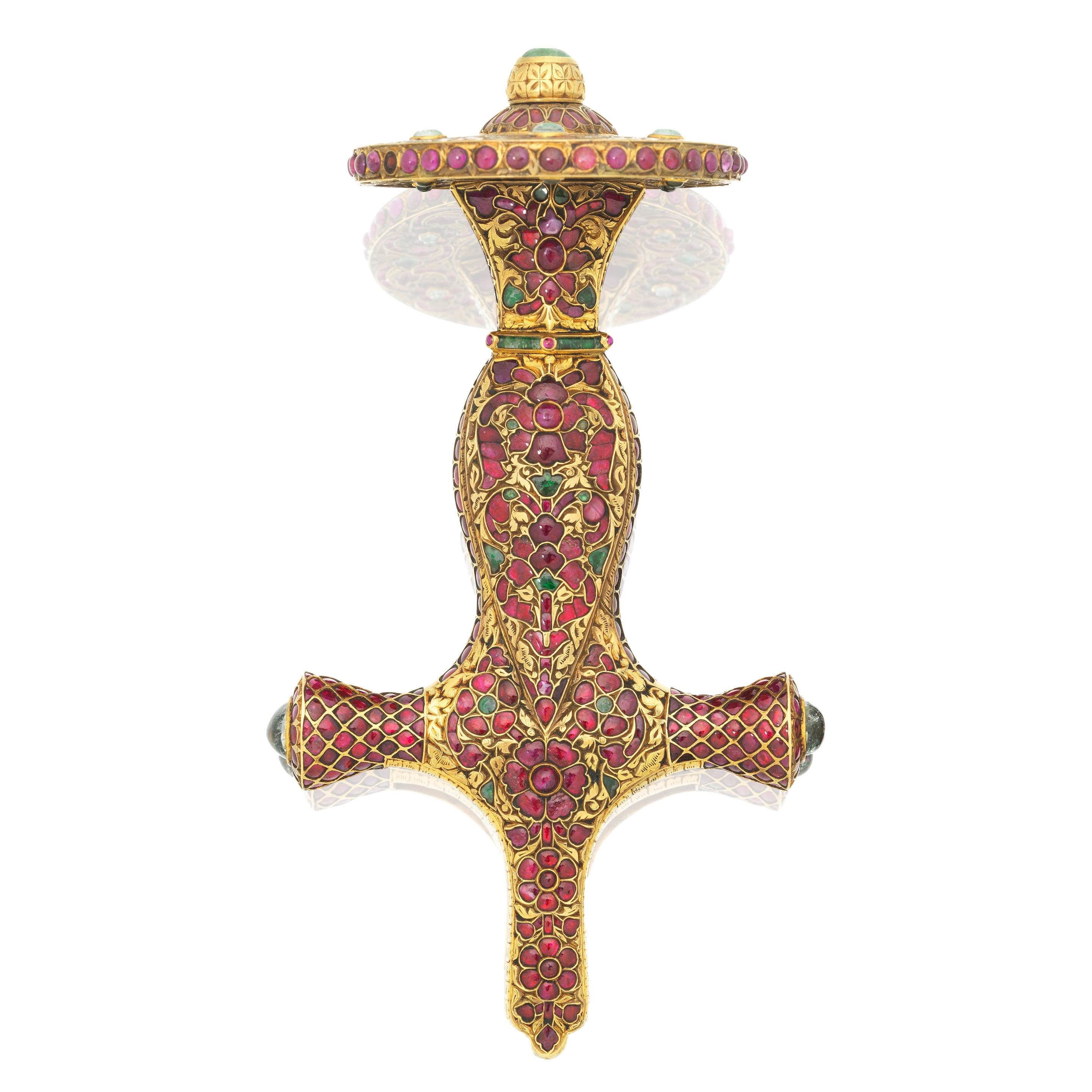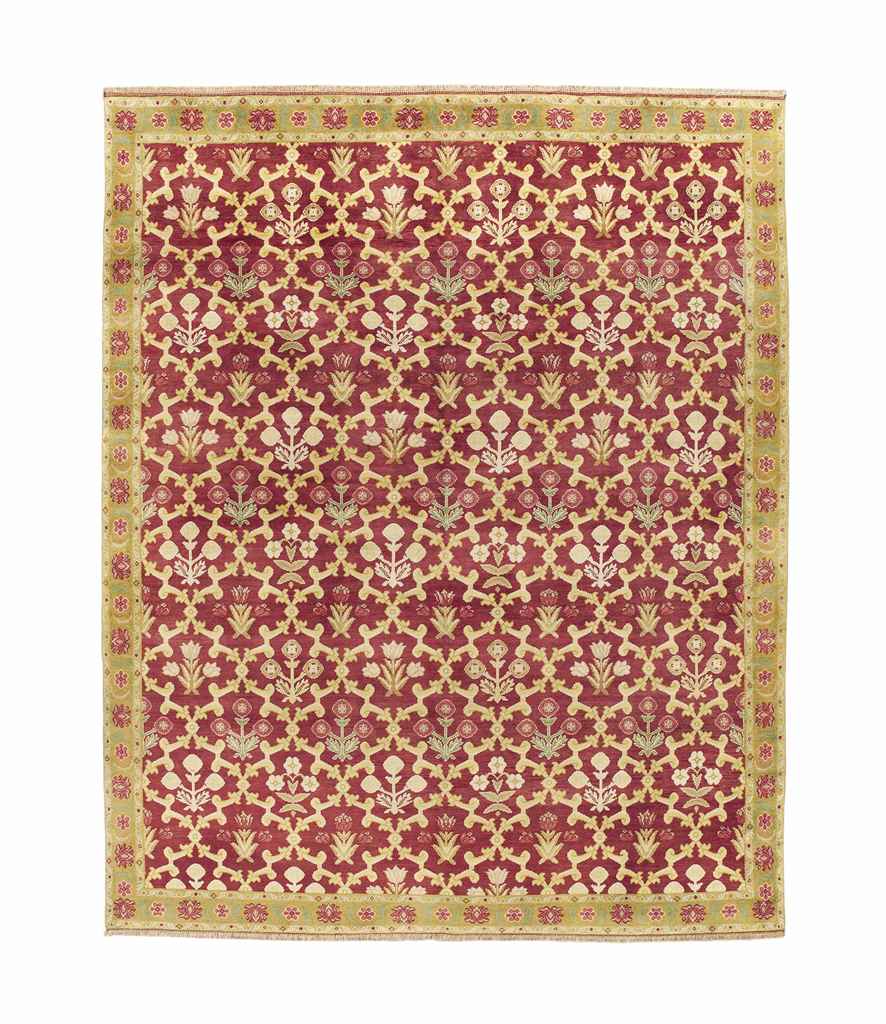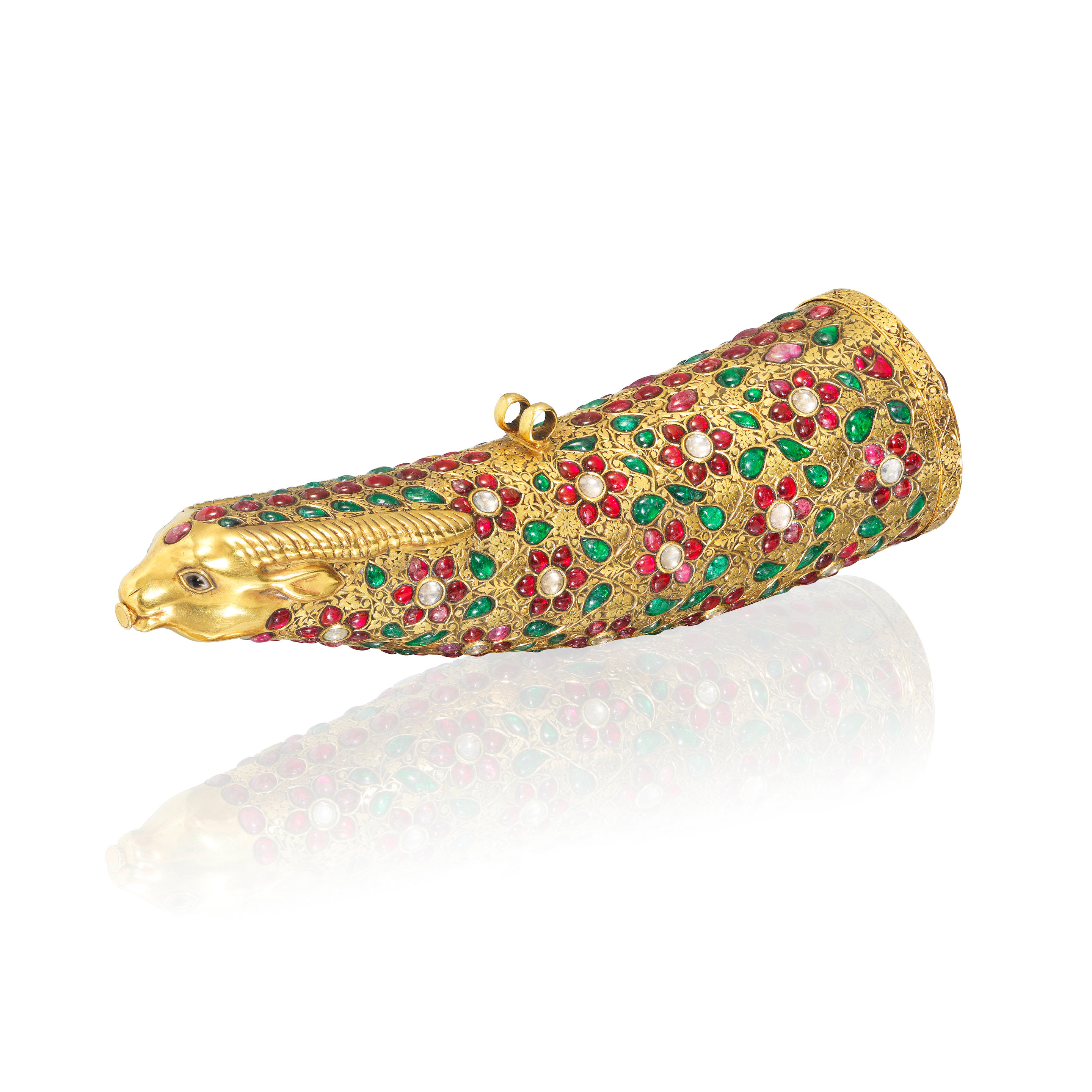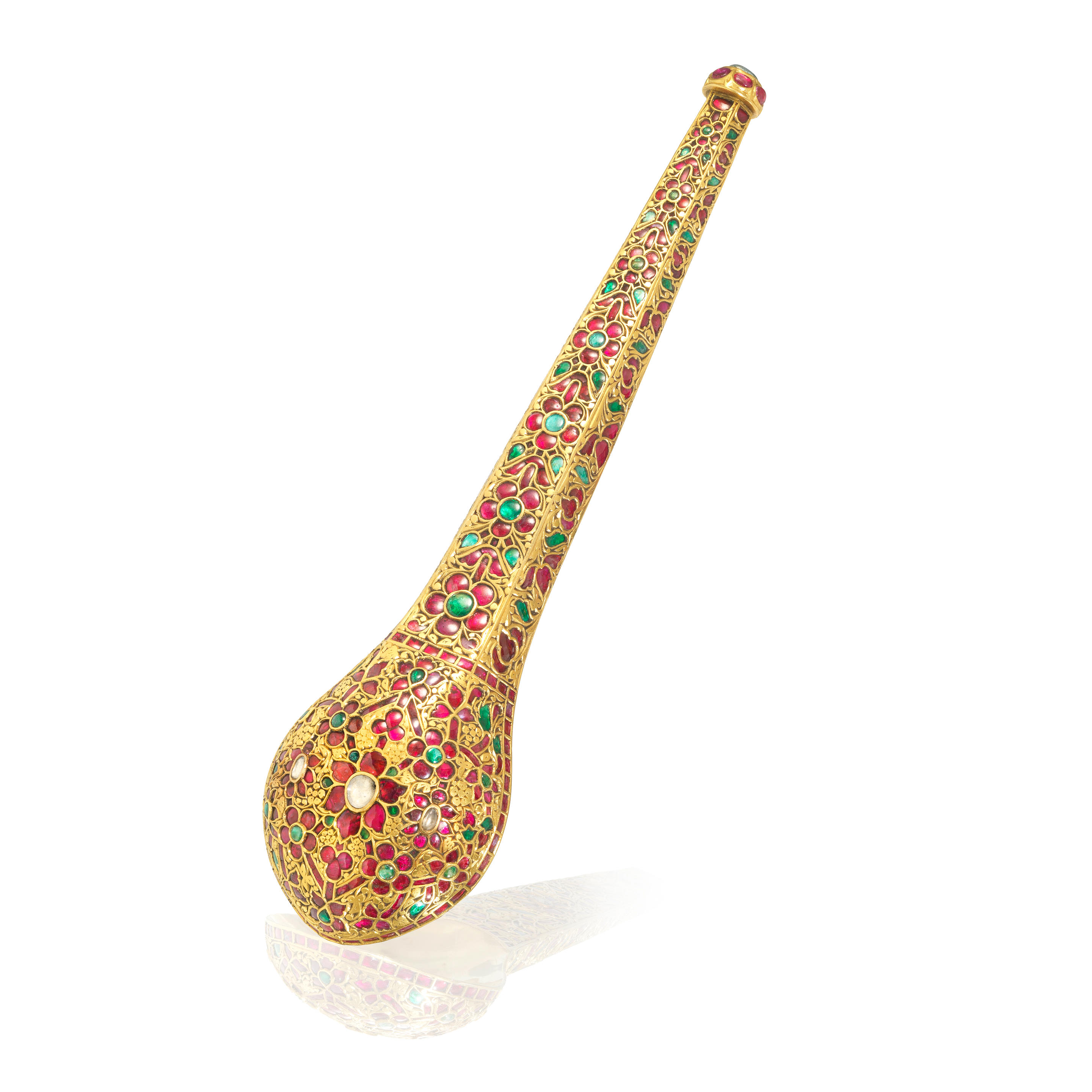A fine Mughal style gem-set gold dagger hilt Indiathe grips of curved flaring form with bifurcated pommel, the cross-guards of waisted form terminating in domed quillons, profusely inlaid to each side with rubies forming a scale design overlaid with emeralds of floral and foliate form, the sides of the grips with emerald bands, the ends of the quillons with diamonds, gold tested as 23 carat, in fitted box 14.8 cm. long; 344 g.FootnotesProvenance The Al Thani Collection. Published Amin Jaffer and Amina Taha-Hussein Okada, From the Great Mughals to the Maharajahs, Paris, 2017, pp. 268-9, no. 200. Tesori dei Moghul e Maharaja. La Collezione Al Thani, exh. cat., The Doge's Palace, Venice, 2018, p. 285, no. 196. Amin Jaffer (ed.), Treasures from the Al Thani Collection, vol. 1, Beijing, 2018, p. 301, no. 200. Exhibited From the Great Mughals to the Maharajahs, Grand Palais, Paris, 29 March - 5 June, 2017. Treasures of the Mughals and the Maharajahs, The Doge's Palace, Venice, 9 September 2017 - 3 January 2018. Treasures from the Al Thani Collection, The Palace Museum, Beijing 2018, 17 April 2018 - 18 June 2018. Inspired by Mughal pieces of the 17th Century, when jewelled daggers were reserved for the emperor and imperial family as well as for gifts indicating royal favour, the present lot is exquisitely fashioned after the cloven-pommel type. Hilts of this type were probably originally formed of two separate pieces of nephrite or ivory, the grip plaques of which protruded, thus culminating in a split pommel. They may also have been inspired by 'eared-daggers', which originated in Spain. These kinds of bifurcated hilts first appear in paintings from the 1620s depicting the Mughal emperor Jahangir (r. 1605-27), who is himself shown wearing or receiving such a dagger, for example in the Padshanamah (Folsach, Meyer and Wandel, Fighting, Hunting, Impressing: Arms and Armour from the Islamic World, 1500-1850, Denmark, 2021, p.236). An example of this kind of hilt can be found in the Metropolitan Museum of Art, New York (1984.332), forming part of a dagger that belongs to a group of jewelled gold objects likely made in the court workshops of Jahangir (D. G. Alexander, Islamic Arms and Armour in the Metropolitan Museum of Art, New York, 2015, pp. 206-207). A further example is within the British Museum (2001,0521.35). For two more examples see S. Kaoukji, Precious Indian Weapons and other Princely Accoutrement, London, 2017, pp. 130-137, cat. 41 and 42. The intricate, imbricated design of the ruby gem settings combined with emerald accents is also reminiscent of the decoration on a 16th/17th Century staff handle found in the same publication, cat. 174.
A fine Mughal style gem-set gold dagger hilt Indiathe grips of curved flaring form with bifurcated pommel, the cross-guards of waisted form terminating in domed quillons, profusely inlaid to each side with rubies forming a scale design overlaid with emeralds of floral and foliate form, the sides of the grips with emerald bands, the ends of the quillons with diamonds, gold tested as 23 carat, in fitted box 14.8 cm. long; 344 g.FootnotesProvenance The Al Thani Collection. Published Amin Jaffer and Amina Taha-Hussein Okada, From the Great Mughals to the Maharajahs, Paris, 2017, pp. 268-9, no. 200. Tesori dei Moghul e Maharaja. La Collezione Al Thani, exh. cat., The Doge's Palace, Venice, 2018, p. 285, no. 196. Amin Jaffer (ed.), Treasures from the Al Thani Collection, vol. 1, Beijing, 2018, p. 301, no. 200. Exhibited From the Great Mughals to the Maharajahs, Grand Palais, Paris, 29 March - 5 June, 2017. Treasures of the Mughals and the Maharajahs, The Doge's Palace, Venice, 9 September 2017 - 3 January 2018. Treasures from the Al Thani Collection, The Palace Museum, Beijing 2018, 17 April 2018 - 18 June 2018. Inspired by Mughal pieces of the 17th Century, when jewelled daggers were reserved for the emperor and imperial family as well as for gifts indicating royal favour, the present lot is exquisitely fashioned after the cloven-pommel type. Hilts of this type were probably originally formed of two separate pieces of nephrite or ivory, the grip plaques of which protruded, thus culminating in a split pommel. They may also have been inspired by 'eared-daggers', which originated in Spain. These kinds of bifurcated hilts first appear in paintings from the 1620s depicting the Mughal emperor Jahangir (r. 1605-27), who is himself shown wearing or receiving such a dagger, for example in the Padshanamah (Folsach, Meyer and Wandel, Fighting, Hunting, Impressing: Arms and Armour from the Islamic World, 1500-1850, Denmark, 2021, p.236). An example of this kind of hilt can be found in the Metropolitan Museum of Art, New York (1984.332), forming part of a dagger that belongs to a group of jewelled gold objects likely made in the court workshops of Jahangir (D. G. Alexander, Islamic Arms and Armour in the Metropolitan Museum of Art, New York, 2015, pp. 206-207). A further example is within the British Museum (2001,0521.35). For two more examples see S. Kaoukji, Precious Indian Weapons and other Princely Accoutrement, London, 2017, pp. 130-137, cat. 41 and 42. The intricate, imbricated design of the ruby gem settings combined with emerald accents is also reminiscent of the decoration on a 16th/17th Century staff handle found in the same publication, cat. 174.













Testen Sie LotSearch und seine Premium-Features 7 Tage - ohne Kosten!
Lassen Sie sich automatisch über neue Objekte in kommenden Auktionen benachrichtigen.
Suchauftrag anlegen